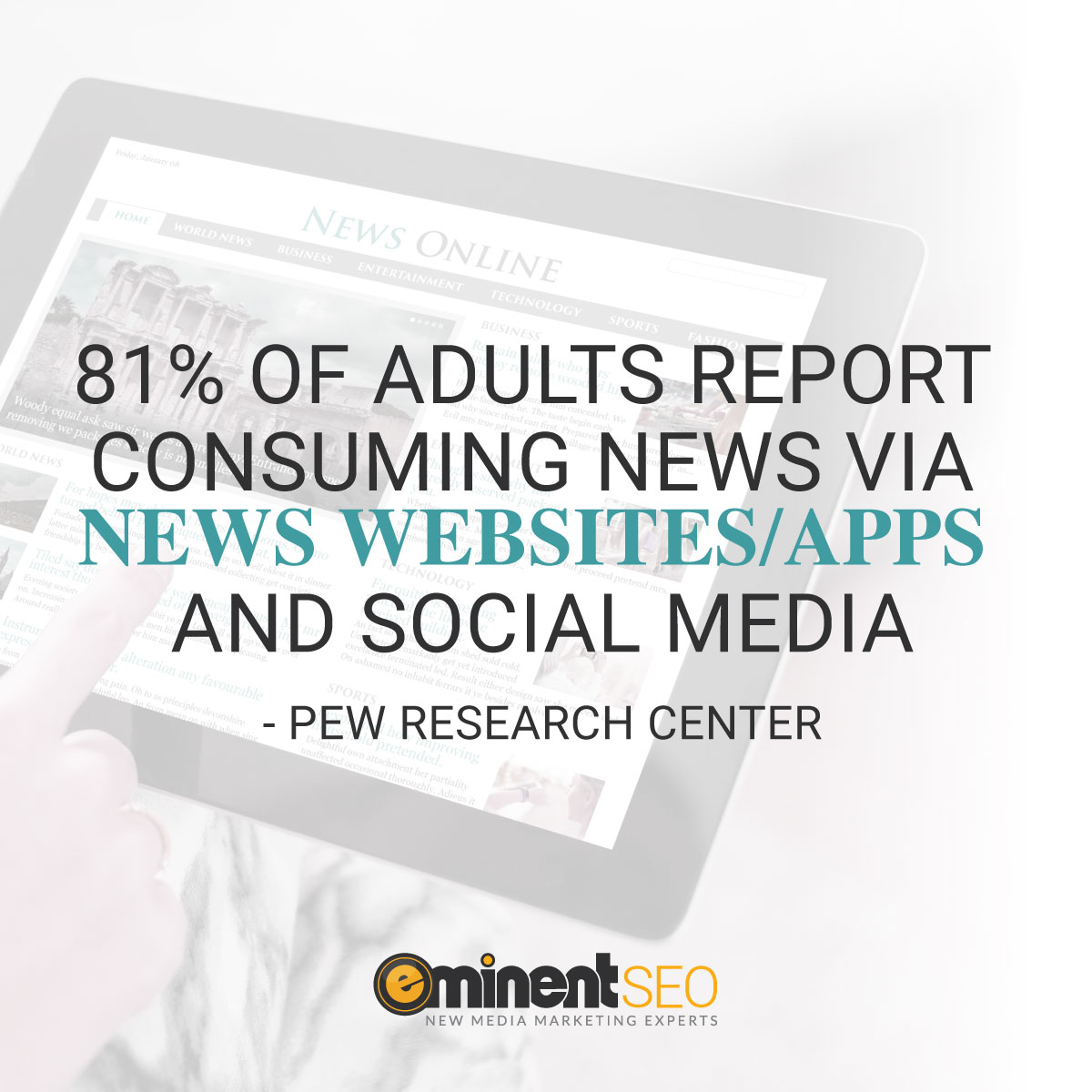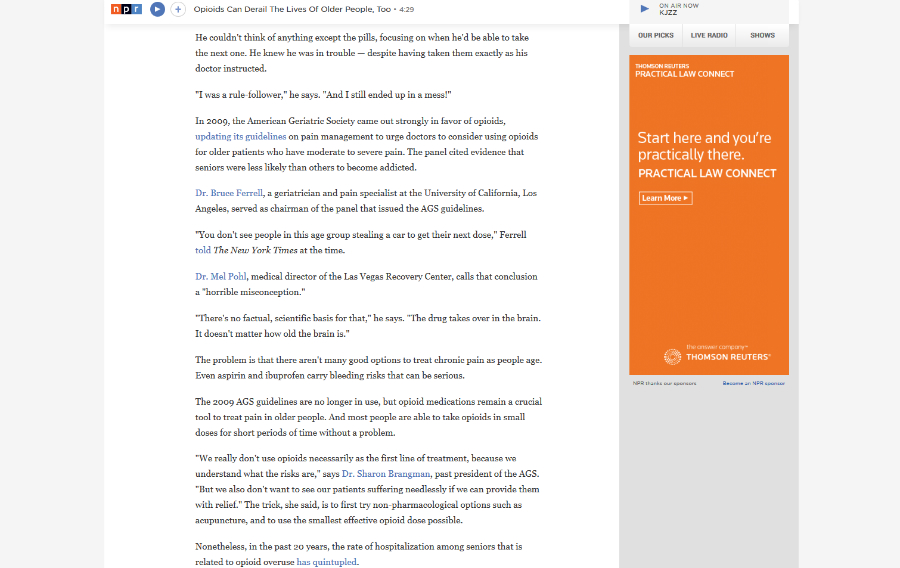
By design, news organizations have the resources to research, report on and publish an online story much quicker than the average B2B or B2C business is able to produce and publish a blog post. And for that, news-focused websites are generally rewarded by being featured more prominently in search engine result pages, trending social media timelines and several other areas of the internet.
Being that news outlets offer relevant, almost up-to-the-minute content, they’re often able to get away with not following the SEO best practices that the rest of us publishers strive to adhere to. Are we envious? A little.
However, all of our years of studying SEO has led to many valuable takeaways on user experience, and we now know that building a better user experience can positively affect search engine results in a number of ways.
So, my objective here is not to critique the content of what news organizations are offering these days. Instead, I want to focus on the presentation of said news. I believe that building a better website user experience (UX) will lead to improved reader loyalty and more page views, and I have a few suggestions on how news websites – whether catering to local, national, international or niche audiences – can make that happen.
Loyalty to Specific News Websites Is Declining
Raise your hand if your preferred method of consuming news is by visiting the homepage of a news website each day and then clicking on several articles of interest.
I’m guessing for everybody who read that, less than half of you actually raised your hand – or at least mentally raised your hand. If you did, there’s a good chance you’re not a big fan of social media – or at least use it sparingly. That’s because social media is altering the way we consume news, even though television is still a major source of news to many Americans.
The Game Is Changing

An early 2016 Pew Research Center study found that 62 percent of U.S. adults get news through social media, with 18 percent saying they do so “very often.” That means only 38 percent of American adults aren’t on social media or don’t come across news through this medium.
Compare this to four years earlier, when only 42 percent of adults reported using social media to consume news.
In the same Pew survey, 35 percent of respondents between the ages of 18 and 29 said social media was the “most helpful” source of information about the then-upcoming presidential campaign. Despite the rise in online and social media usage, there were still more people in the survey that said they would rather watch news (46 percent) than read it (35 percent) – although the TV news watchers trend 50 years old or older.
Also worth noting is a 2015 Pew survey in which 49 percent of people younger than 35 years old who come across news on either Twitter or Facebook reported that these platforms were either their most important source or “an important source” of news.
The news industry looks like it is becoming a cutthroat contest of which media outlet can collect the most scraps off the table in social media. Likes, comments, shares, retweets, etc. are all good and well, but the goal is to entice a social media user to click through to the full article (and then to a few other articles), especially if that person doesn’t regularly visit said website.
Where the User Experience Is Lacking
Not every website is guilty of the following user experience deficiencies, and I’m not going to call out any specific website, but I want to elaborate in general on what news sites can and should do to enhance their UX. I’ve identified four major areas that media outlets should consider regarding the online user experience they offer readers.
1. Subheaders
Subheaders aren’t just good for SEO. They help break the article down into digestible pieces for the reader.
Newspaper journalism was already big on short paragraphs. When news outlets started producing online content, they were already ahead of the game when it came to paragraphs that eschewed the traditional five-to-seven-sentence structure.
Shorter paragraphs became even more critical when users started consuming content on mobile.
So, most media outlets were positioned well in that department, but many are still following the school of thought that the article only gets the one headline, followed by paragraph after paragraph until the report concludes. That’s going to become more and more of a problem as readers’ attention spans continue to decrease.
Check out the second half of this article for example:
Although examples like this are aplenty, many news websites are starting to get the hint and have begun breaking up their longer articles with full-width images, charts, pull quotes or even (gulp) ads. But shouldn’t they time to add subheaders in addition to these images or ads?
It’s time to embrace the H2s and H3s that content management systems afford the publisher. The New York Times has done so, but others are lagging behind. News organizations’ web teams should utilize subheaders and work in keywords of notable individuals or heavily searched topics: These will give their articles a little more staying power in the search engine results, especially long after the publish date.
Highly descriptive and enticing subheaders will also help with keeping readers on the page longer and hopefully getting them to the bottom of the article, which is where the next two suggestions come into play.
2. What the Reader Should Do When Finishing the Article
As copywriters within a marketing agency, the death knell for us would be allowing the readers of our clients’ websites to reach the bottom of a page and ask, “OK, what do I do from here?”
This is why we put a lot of time into our final calls to action (CTAs), trying to leaders visitors to a strategic place after they’ve finished reading any page on the site. We don’t always direct readers to call the client. Sometimes we link to another page on the site, or we may encourage the visitor to subscribe to the blog or just leave a comment on the page at hand.
I’ve noticed many websites are lacking in this area. You get to the bottom of the article, and it either has limited or uninspiring options for where to go next. Many media websites have those spammy Outbrain articles at the end of the page. I get it: You have to pay bills. But even if that stream of advertising is something you must keep, you still need to have ways to entice the reader to visit another page or area of the site.
If all you offer are outbound articles or even unrelated articles from elsewhere on your site, it will leave many readers with a hollow feeling once they reach the end of an article. They might consider clicking on the homepage to start over, or simply flee from the website at that point.
Some news websites offer related articles once the user reaches the end of the page, and I think this is a good direction to go in. However, I think this area needs to be highly visual and carefully curated considering the article at hand. For example, a straightforward news report can lead to an opinion piece on the very same topic, or vice versa. Or if the article at hand is an update on a previous report, the earlier article could be the featured related article.
3. Comment Sections
I know moderating comments is probably the bane of existence for news web teams, but it’s undeniable that these user messages spur interaction and discussion. Having comment sections is one way to solve the “what do I do from here” question that comes up when reaching the end of an article. Comment sections certainly can keep readers on the site longer, and they sometimes encourage the reader to revisit the same page several times over.
Interestingly, I saw many news websites ditch their comment sections over the last couple of years, but they’re starting to make a comeback on many sites – particularly after the last presidential election concluded.
Web teams seem to have realized that they can still offer the commenting experience without making it a fixed and indelible part of a particular article. There’s nothing worse reading an article then immediately seeing a trollish, irreverent and easily visible first comment as if it’s a permanent part of the page.
This is why most websites now keep the comment section hidden until the user manually clicks to open it up. Nothing wrong with that.
Building a Productive Commenting Experience
Yes, comment sections have the potential to devolve into a sea of hostility or fruitless conversation. This is why it’s important to employ third-party tools like Disqus that can help cut down on some of the spam and trolling. Or even better, make users sign in with their Facebook account so they have to put their name behind whatever they post.
Such commenting tools won’t be a fail-safe solution to ridding all spam, bullying, etc., but they can automate at least part of this process for web teams. That being said, it would still be worthwhile for news orgs to assign at least some level of comment-moderation duties to employees.
Even with the potential drawbacks, user comments have a chance to enrich the news-consumption experience for readers. You’ve probably seen some comments that add to the background of the article at hand. Or maybe they discuss another side of the story that the article failed to mention. Or maybe they point out a spelling or factual error that the web team can quickly correct.
Most media outlets will find that allowing users to comment on any article, even if the option is hidden at first, will enhance the user experience for their audience and far outweigh any disadvantages that comment sections harbor.
4. Too Many Gimmicks

While this practice might have helped certain websites gain artificial page views, it must not have been working well: Many organizations seem to have fallen out of love with this tactic. I would imagine that high bounce rates and negative feedback influenced the decision.
Other gimmicky practices need to be reevaluated: Pop-up ads and prompts are a good place to start. If the website lives off a paywall model, then it makes sense to deliver a pop-up to a new user to tell them to either sign up or how many free articles they have left for the month.
In almost any other case, however, pop-ups need to be evaluated to see if they’re returning any reasonable ROI. If not, it’s time to 86 them. It’s not as if they make the user experience more enjoyable anyway.
Auto-play videos are another potential annoyance to consider. If a television news station has them on its website, fine. That makes sense. But in most other cases, it’s going to aggravate much of the user base.
Who’s Your Audience
Ultimately, user experience is going to come down to identifying and understanding your audience and then delivering the content they crave. This will get the page views moving in the right direction.
Readers will likely forgive the lack of subheaders and such if their favorite news websites continue to cover the stories that they want, and if the sites provide insight, images and/or interactive multimedia that competitors can’t offer.
What do you enjoy most about your favorite site for news? How do you think it could provide an even better experience as a user? Let us know in the comment section below.



Great article Andrew. I think one way for them to optimize UX is to make their website layout cleaner. Most news sites are too overwhelming at first glance, at least for me. I was wondering, for new sites which social media platform do you think is best for them to share and promote their news content?
Thanks for reading, Emmerey. I definitely agree that most news websites should clean up their overall layout, especially on the homepage. I guess I glossed over it because it was such a foregone conclusion in my mind; most sites publish such a sheer volume of stories that they’re bound to be a little cluttered.
I think Facebook works well for sharing news content. It definitely gets conversations started, and this is why many news orgs claimed they no longer needed comment sections on their site, although I think that was only partially true. Twitter is definitely a good channel for news content too, but the publisher might have to tweet the same story several times (using different headlines, hopefully) in order to bring the desired number of eyeballs to the article.
Thanks again for your input!
I see. I notice that on Twitter. Now I know why. Thanks Andrew for responding! 🙂 Helps a lot.
A single tweet is VERY easy to miss, especially if you follow a few hundred or thousand accounts. Although, it seems like Twitter’s algorithm has recently changed and my timeline is showing only a selective few posts, kind of like Facebook. I’m keeping an eye out to see if this is official or not.
I do believe that times are changing drastically. Everyone I know at least gets all their information about the news on Facebook. I always tell people Facebook isn’t a reliable news source! I think that social media really did effect the outcome of the election, and without social media, the presidential campaign of both candidates would greatly be changed.
Hopefully they’re still getting the news directly from reliable media outlets on Facebook rather than from friends who are sharing certain articles and putting their own spin on it, but I’m not confident this is always the case. Yes, Facebook in itself isn’t reliable, but there are a few accounts that are. Maybe more people would visit news sites directly if they weren’t so cluttered and if they offered a better user experience. And that’s not even getting into some of the accuracy issues. Nonetheless, I appreciate your insight into this issue, Lauren! Thanks for reading.
Good article. I like how you said good websites have a place to lead the reader after they finish the article. We need to make sure that the article is serving it’s true purpose.
Thanks for reading! A good webpage should not only be for the reader, but it’s also for the publisher – to lead the reader to a strategic place after finishing reading the article.
I realize this looks a little different for news websites, as they don’t have many revenue-generating pages to lead you to after finishing an article. But still, there’s nothing worse than reaching the bottom of an article and finding 1) no comment section, 2) haphazard related links (or none at all) and 3) a block of spammy Outbrain article links! Give us something better than that, huh?
I actually like those 3) spammy block of articles when it says they’re from ZergNet lol
Do you now? Even if they are #fakenews? Maybe we should add them to the bottom of our site…
I just suggested that to the big boss…… I got a sharp stare back as my answer so I’m gonna guess NO